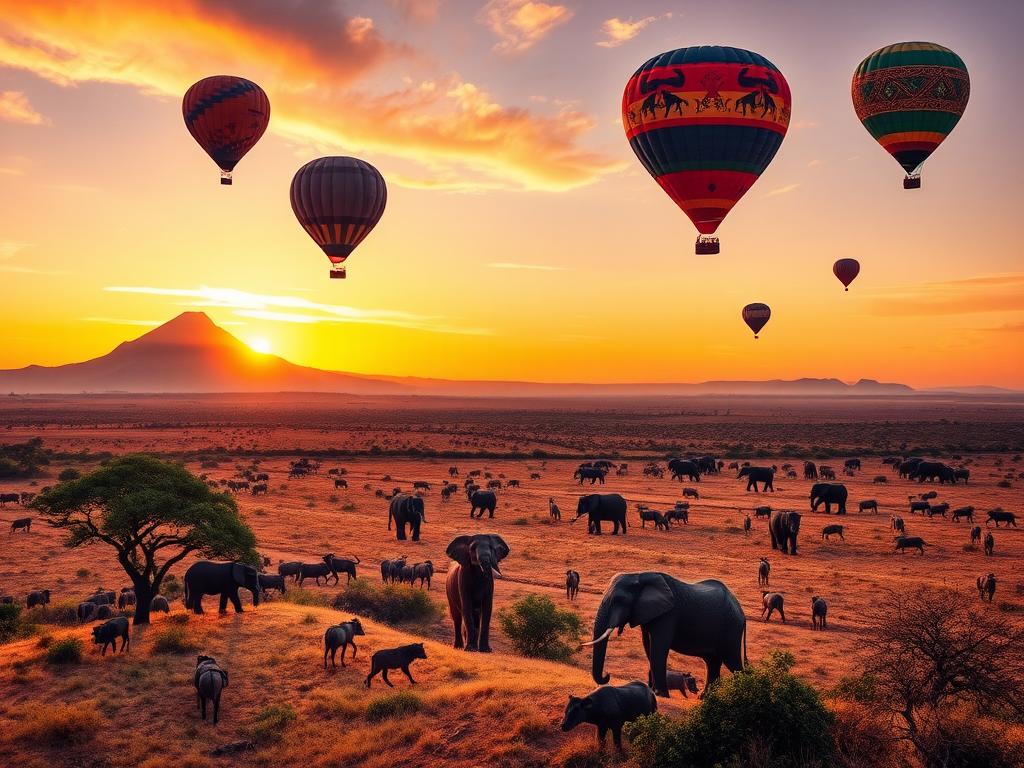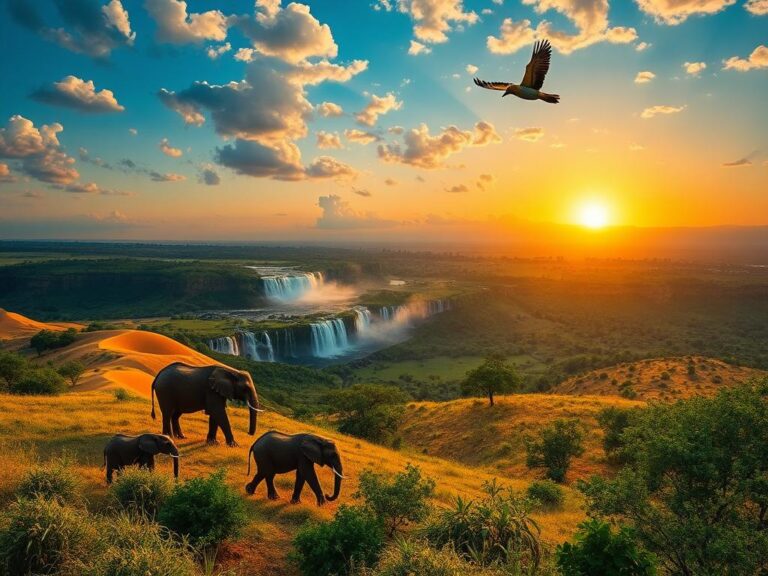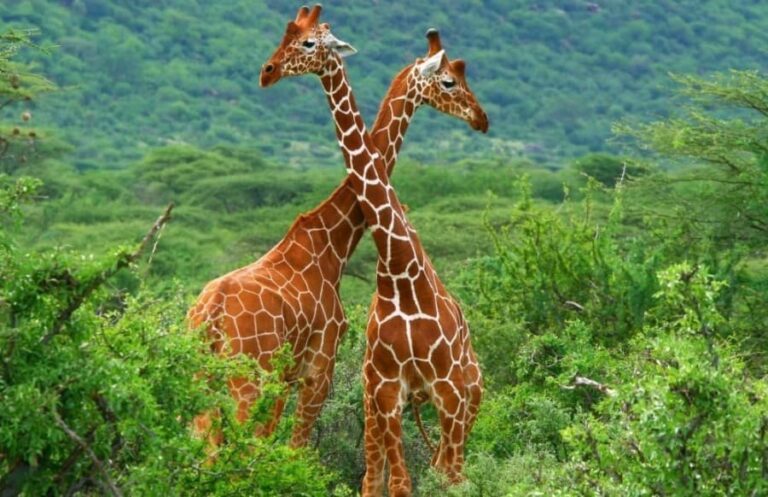
Best Time to Visit Africa: Exploring the Ideal Seasons for Your Adventure
Best Time to Visit Africa: Exploring the Ideal Seasons for Your Adventure
Best time to visit Africa can significantly enhance your travel experience, allowing you to witness the continent’s breathtaking landscapes, diverse wildlife, and rich cultural traditions at their finest moments. With its vast geographical expanse, Africa presents unique climates and experiences each month. Choosing the right time to visit is pivotal in making the most of your adventure. Are you an avid wildlife enthusiast wanting to witness the Great Migration or a culture seeker excited about vibrant festivals? This article will explore the best months to travel to Africa, focusing on diverse regions while ensuring you have an unforgettable journey filled with incredible experiences. Get ready to discover the ideal times for your African escapade!
Why Timing Matters When Visiting Africa
When planning a trip to Africa, understanding the significance of timing is crucial.
The continent experiences diverse climates that can vary dramatically between locations, impacting what activities you can enjoy and what you might miss.
Considering seasonal wildlife migrations, festivals, and weather conditions can elevate your travel experience, allowing you to interact with the land and its people in meaningful ways.
The Climate of Africa: A Quick Overview
African climates can be broadly divided into various categories, including tropical, arid, and temperate zones.
While equatorial regions may be warm and humid year-round, northern and southern parts experience distinct rainy and dry seasons.
Understanding these patterns helps pinpoint the best times for wildlife sightings and cultural celebrations.
January – Celebrate Summer in Southern Africa
The year kicks off with the warmth of summer in Southern Africa, making January an ideal month to visit this region.
Countries like South Africa, Namibia, and Botswana come alive with lush landscapes and active wildlife as they bask in sunny temperatures.
With several national parks open for exploration, you’ll likely encounter a wide range of animals enjoying their habitat.
For instance, the Kruger National Park showcases animals such as lions, elephants, and leopards that are easier to spot against the greenery.
However, keep in mind that rain showers can occur, usually in the late afternoon.
February – Witness the Great Migration
February is one of the prime times for experiencing the Great Migration in Tanzania’s Serengeti.
During this time, wildebeests gather for calving season, providing incredible wildlife photography opportunities.
This remarkable sight allows travelers to witness the cycle of life in the wild and the dynamics of predator-prey interactions.
As renowned wildlife photographer Jonathan Scott stated, “There is no better time to document nature’s breathtaking spectacles than during the migration.”
March – Enjoy Mild Weather in Morocco
As winter bids farewell, March brings mild temperatures to Morocco, making it perfect for discovering its rich cultural heritage.
Explore the bustling markets of Marrakech or the ancient medinas of Fez and Essaouira.
Additionally, March is particularly favorable for hiking adventures in the Atlas Mountains, where stunning views and blooming flora await travelers.
This month is also an excellent time for desert excursions, with days basking in pleasant sunlight followed by cooler nights.
April – Discover Namibia’s Unique Landscapes
As the rainy season concludes, April unveils breathtaking scenes in Namibia, showcasing the vibrant desert landscapes and foliage.
The Namib Desert’s red dunes and Etosha National Park’s wildlife provide stunning backdrops for incredible photography.
April is also the perfect time for those looking to explore the vast landscapes without the scorching heat of the summer months.
Visitors are welcomed by blooming wildflowers, which add a splash of color across the desert terrain.
May – Celebrate Cultural Festivals in Ethiopia
In May, travelers can immerse themselves in the rich culture of Ethiopia as the Ethiopian Orthodox Church celebrates the SPRING festival, known as Genna.
This vibrant festival features lively parades and music that reflect the traditions of the local communities.
Additionally, May marks the start of the green season, where lush landscapes create picturesque settings for exploring historical sites like Lalibela, with its fascinating rock-hewn churches.
The warm and pleasant weather encourages comfortable exploration of Ethiopia’s diverse regions.
June – Kick Off Africa’s Safari Season
June marks the beginning of the dry season, making it perfect for wildlife viewing opportunities.
Kenya and Tanzania become hot spots for animal migrations, as the dry season brings animals to the waterholes for easier spotting.
Many tour companies kick off their safari operations during this month, presenting plenty of organized tours for you to consider.
Wildlife enthusiasts will have a great chance to see the breathtaking dance of nature unfolding as animals converge in large numbers.
July – The Peak Safari Season in East Africa
July is considered the peak month for safari enthusiasts in East Africa.
Not only can you witness the spectacular river crossings of the Great Migration in the Maasai Mara, but wildlife spotting is at its optimal with clear visibility.
As renowned naturalist Sir David Attenborough once remarked, “Nature’s spectacle is best observed when timing meets opportunity.”
Preparing for a July visit ensures encounters with impressive wildlife and majestic landscapes that left travelers awe-inspired.
August – Experience the Beauty of Victoria Falls
August offers a unique opportunity to visit Victoria Falls, where the water levels are relatively low, revealing stunning views that are often obscured.
You can experience the falls more intimately, allowing for the perfect photography opportunities.
This is also an optimal time for thrilling activities like white-water rafting on the Zambezi River.
With warm days and cooler nights, August creates an inviting climate for adventurous outdoor pursuits.
September – Perfect for Kenya’s Balloon Safaris
September is an extraordinary month for exploring the Maasai Mara and experiencing an early morning hot air balloon safari.
Rising at dawn, you will witness breathtaking views of the African savannah while seeing its wildlife awakened at sunrise.
The cool morning air quickly transforms into pleasantly warm temperatures, allowing for a refreshing exploration experience.
This unique adventure provides travelers with an unforgettable vantage point of nature’s finest scenery.
October – Explore South Africa’s Wine Regions
As harvest time rolls around in October, South Africa’s wine regions come to life, particularly in Stellenbosch and Franschhoek.
Visitors can enjoy wine tastings, stunning vineyard tours, and delicious culinary experiences as the vines are laden with ripe grapes.
The autumn colors add depth to the landscape, making it a picturesque time to explore the region.
This experience brings together the rich flavors of South African wines and the beauty of its vineyards seamlessly.
Crafting a Well-Timed African Adventure
With the diverse experiences offered throughout the year, crafting a well-timed African adventure becomes essential.
Prioritize your interests—whether they involve engaging with local cultures, embarking on exhilarating safaris, or seeking thrilling outdoor escapades.
By aligning your travel plans with the best times for specific environments, you can maximize the potential for memorable experiences during your journey.
Benefits of Exploring Africa with Proper Timing
Visiting Africa during its peak seasons provides numerous advantages, including:
- Optimal wildlife viewing opportunities and migrations.
- Cultural experiences aligned with vibrant festivals and ceremonies.
- Favorable weather conditions for outdoor activities.
- A chance to connect with local communities and cultures.
- Incredible photographic opportunities amidst stunning landscapes.
Conclusion
Choosing the best time to visit Africa is crucial in maximizing your experience on this diverse and enchanting continent.
From summer adventures in Southern Africa to witnessing wildlife migrations in East Africa, every month offers unique opportunities.
Understanding the regional weather patterns, wildlife behaviors, and cultural events can enhance your travel experience significantly—allowing you to explore, engage, and connect more deeply with the diverse landscapes and vibrant cultures of Africa.
Share your thoughts, experiences, or questions about visiting Africa in the comments section below!
FAQ
What is the best time to see the Great Migration?
The best time to see the Great Migration is typically between January and March in Tanzania, with July and August offering spectacular river crossings in Kenya’s Maasai Mara.
When can I experience the milder weather in Morocco?
March is the ideal month for mild weather in Morocco, making it perfect for exploring cities like Marrakech and Fes as well as hiking in the Atlas Mountains.
Which months are considered peak safari season in East Africa?
July and August are considered peak safari months in East Africa, with optimal wildlife viewing opportunities resulting from the dry season.
What should I pack for my African adventure?
It is essential to pack lightweight clothing, sturdy footwear, sun protection, a hat, and insect repellent.
Layers are recommended to accommodate varying temperatures, especially during mornings and evenings.
Are cultural festivals worth attending in Africa?
Cultural festivals, such as Ethiopia’s Genna in May, provide unique insights into local customs and traditions.
Experiencing these events enriches your understanding of Africa’s cultural heritage and enhances your travel experience.


